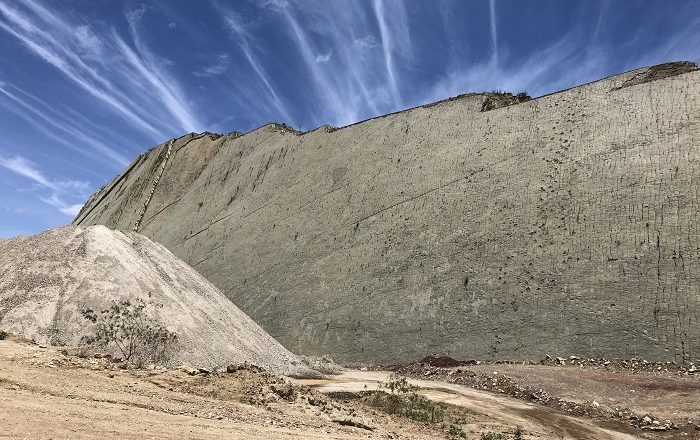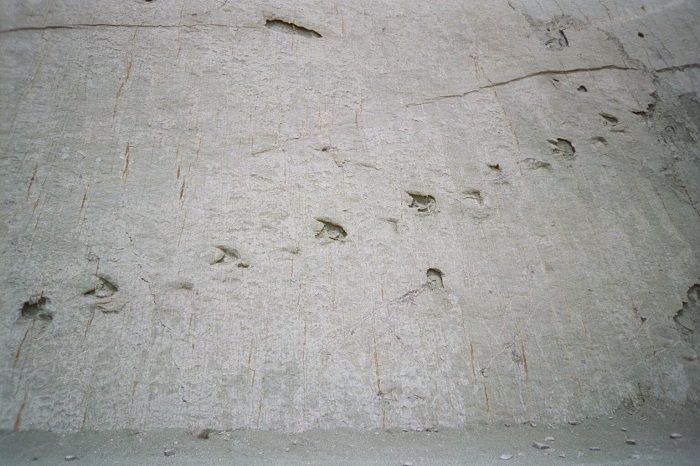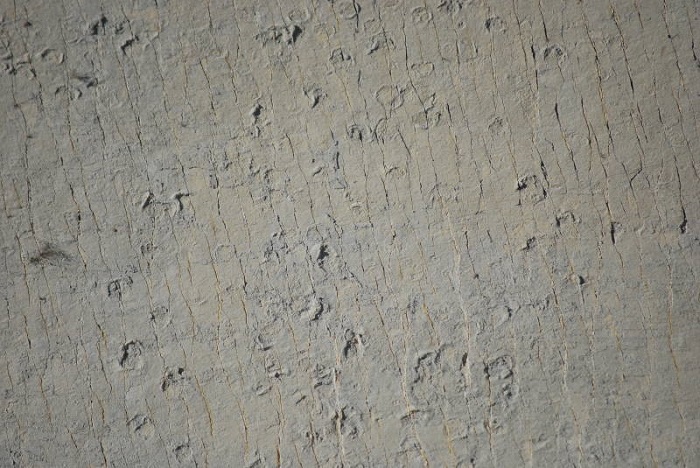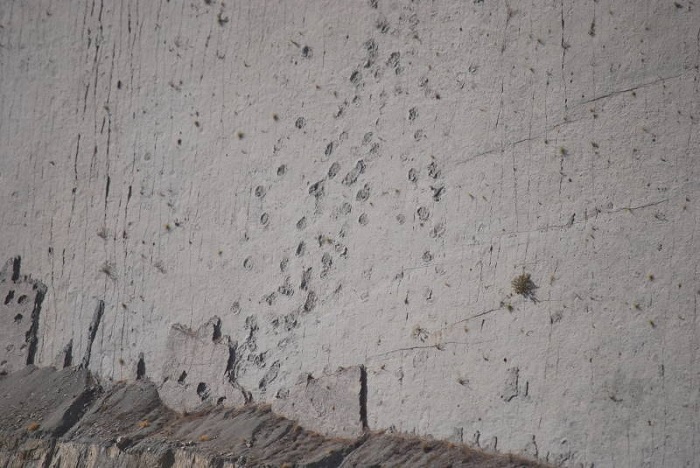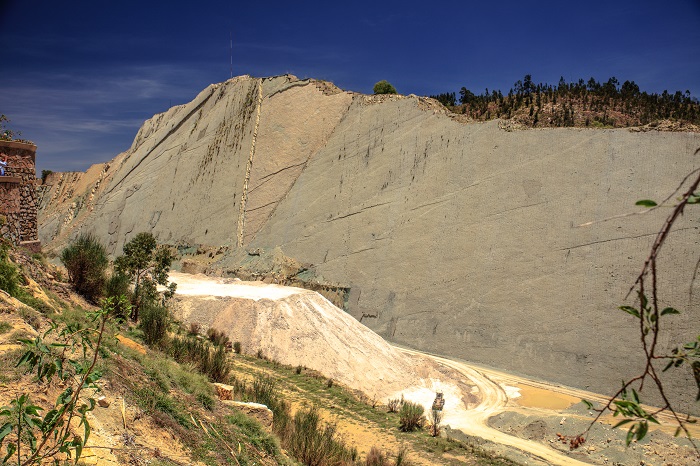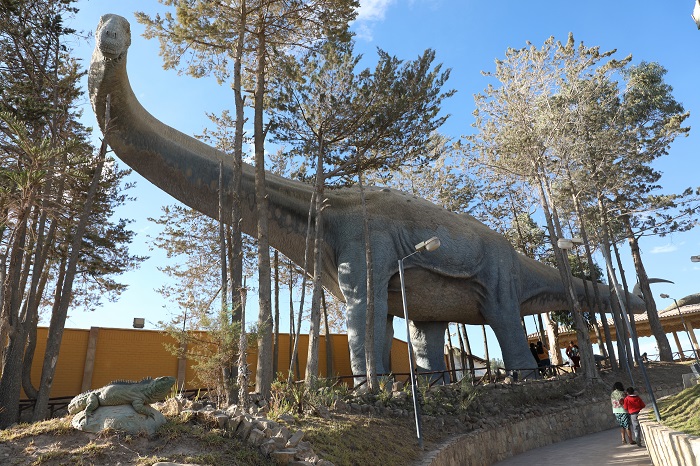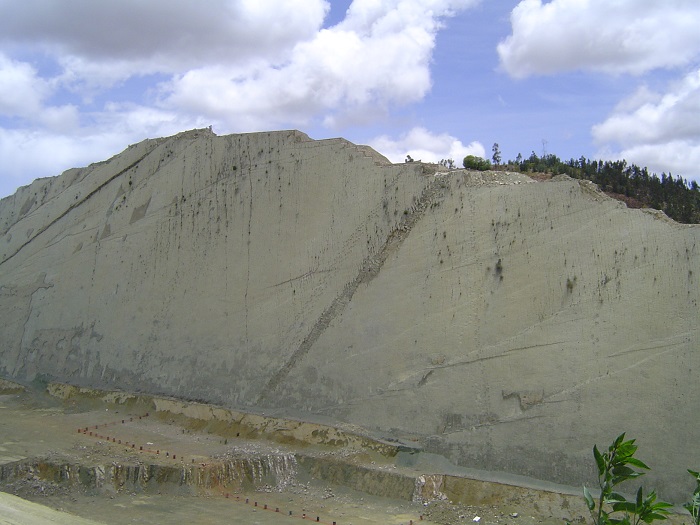Cal Orck’o is a remarkable paleontological site that holds the largest collection of dinosaur footprints which were ever been discovered, and it is located around 4.4 km (2.7 mi) northwest of the constitutional capital city of Sucre, in the Chuquisaca Department, within the southern part of the Plurinational State of Bolivia. As this very important site is located within the limestone quarry of Fancesa, the given name of the paleontological site means “Lime Hill” in the local Quechua language, and it reflects the geological composition of the site.
As the site is an enormous vertical rock wall that stretches for about 1.2 km (0.7 mi), reaching a height of approximately 110 m (361 ft), this site preserves a prehistoric record of dinosaurs that once roamed this region around 68 million years ago. The name Cal Orck’o comes from the Quechua language, where “Cal” means limestone and “Orck’o” translates to hill, referring to the large rock face that rises above the area.
Cal Orck’o formed as a result of events at the Late Cretaceous period, when this area was a broad floodplain covered by sediment and mud, so when dinosaurs walked on the wet ground, deep prints were formed, which were later buried under overlying layers of sediment.
Over millions of years, as natural forces compressed these layers into rock that captured the footprints, the tectonic pressure later pushed these sedimentary layers upward, tilting them to a nearly vertical orientation, which is why the site’s current appearance is visible as a flat, almost vertical board. Fortunately, the footprints are intact because of the unique character of the limestone, which is composed of oolitic fossiliferous limestone associated with large, freshwater stromatolites, which have shielded them from erosion while maintaining their incredible detail.
Among the most impressive discoveries at Cal Orck’o is the numerous footprints, as there are over 12,000 that have been discovered so far, and among these, there are sizeable differences in the footprints, as it can be concluded that there are a minimum of eight different species of dinosaurs. Still, the site holds the longest known unbroken track way of a single dinosaur, with a 347 m (1,138 ft) long track that was left by a titanosaur. There are also prints of theropods, ankylosaurs, and ornithopods, which also provide invaluable insights into the locomotion and behavior of these ancient monsters, so the diversity of the tracks indicates that this region was once a thriving ecosystem, supporting several species.
As Cal Orck’o remained concealed for millions of years, it was not until 1994 when quarrymen caught sight of the characteristic markings on the limestone cliff, and ever since that time, there have been efforts to safeguard the site from ongoing erosion and problems of quarrying. There are steps that have been taken to stabilize the rock face while limiting the quarrying activity, and there have also been steps taken to publicize the site to the public at large so that everyone would be aware of the value of the site. Furthermore, future conservation efforts would entail stabilizing the vulnerable footprints and expanding the study to gain greater access to understanding the site’s history of significance.
Still, paleontologists regard Cal Orck’o as one of the most important fossil sites in the world because it offers a rare, well-preserved snapshot of dinosaur behavior in the Cretaceous period, and it provides essential data for studying the movement, interactions, and possible extinction patterns of these ancient creatures.
Visitors are able to tour Cal Orck’o in guided visits at Parque Cretácico, which is a regional museum with an expertise on the site, and as there are view points, scale models of the dinosaurs, and accurate details about the fossils that exist within the park, they simply transform the area from the time time when the giants were roaming the area and thrived in the magnificent conditions of the time. Although people are not allowed to get close access to the wall due to the preservation and to avoid damaging the footprints, tourists have look-out points from where the footprints are clearly visible. Nonetheless, the best time to visit is during the dry season from May to October when weather conditions are optimal.
Overall, Cal Orck’o stands as a testament to the ancient world, offering an unparalleled view of the past, and with ongoing conservation, this incredible site will continue to inspire and inform future generations about the ancient creatures that once roamed Bolivia’s landscape.

